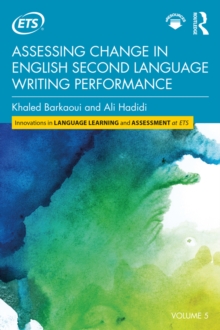
Automated Speaking Assessment : Using Language Technologies to Score Spontaneous Speech PDF
Edited by Klaus Zechner, Keelan Evanini
Part of the Innovations in Language Learning and Assessment at ETS series
Description
Automated Speaking Assessment: Using Language Technologies to Score Spontaneous Speech provides a thorough overview of state-of-the-art automated speech scoring technology as it is currently used at Educational Testing Service (ETS). Its main focus is related to the automated scoring of spontaneous speech elicited by TOEFL iBT Speaking section items, but other applications of speech scoring, such as for more predictable spoken responses or responses provided in a dialogic setting, are also discussed. The book begins with an in-depth overview of the nascent field of automated speech scoring-its history, applications, and challenges-followed by a discussion of psychometric considerations for automated speech scoring. The second and third parts discuss the integral main components of an automated speech scoring system as well as the different types of automatically generated measures extracted by the system features related to evaluate the speaking construct of communicative competence as measured defined by the TOEFL iBT Speaking assessment. Finally, the last part of the book touches on more recent developments, such as providing more detailed feedback on test takers' spoken responses using speech features and scoring of dialogic speech. It concludes with a discussion, summary, and outlook on future developments in this area. Written with minimal technical details for the benefit of non-experts, this book is an ideal resource for graduate students in courses on Language Testing and Assessment as well as teachers and researchers in applied linguistics.
Information
-
Download - Immediately Available
- Format:PDF
- Pages:228 pages
- Publisher:Taylor & Francis
- Publication Date:28/11/2019
- Category:
- ISBN:9781351676113
Information
-
Download - Immediately Available
- Format:PDF
- Pages:228 pages
- Publisher:Taylor & Francis
- Publication Date:28/11/2019
- Category:
- ISBN:9781351676113










